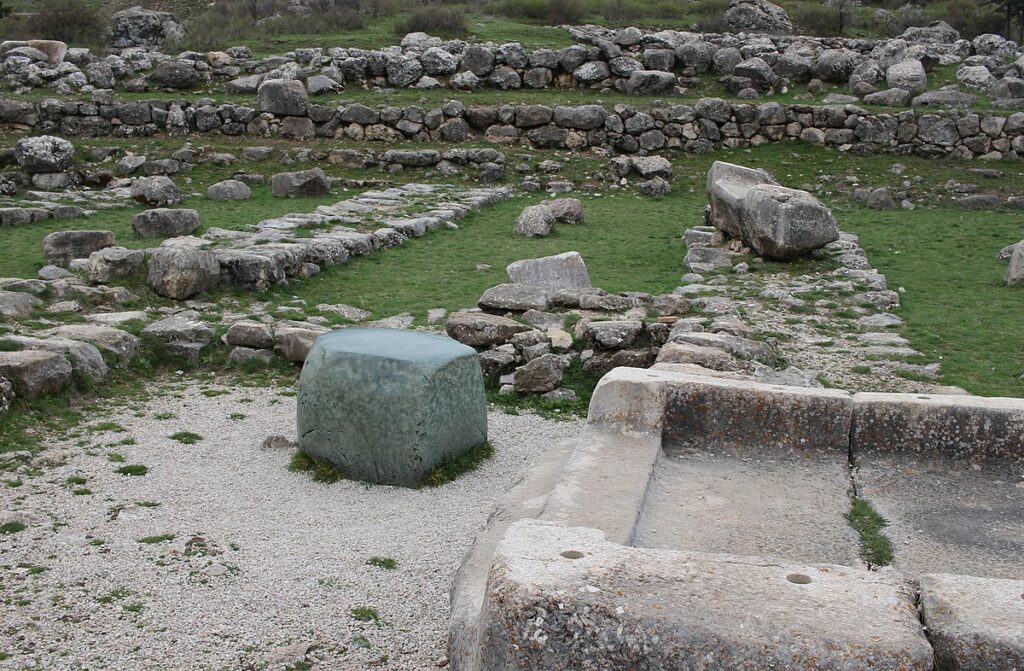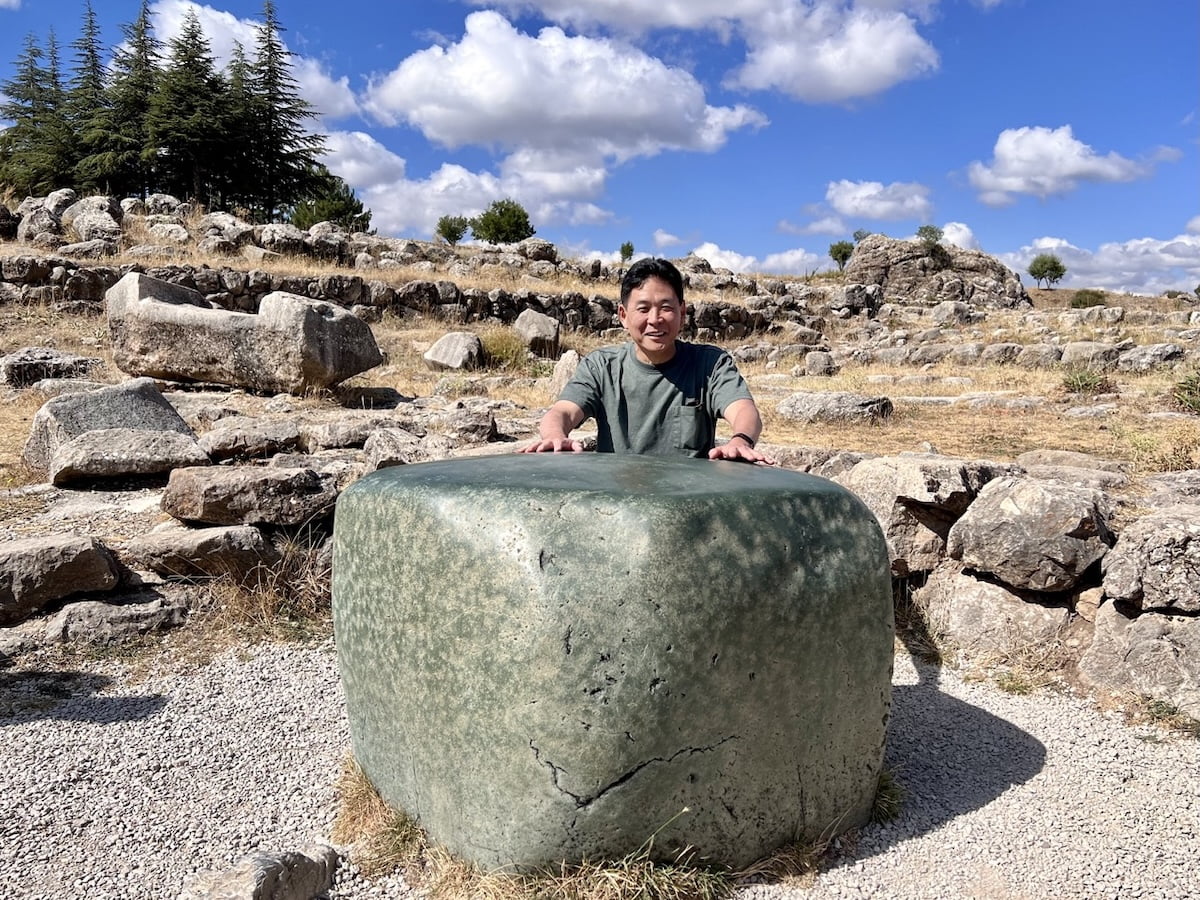Table of Contents
ToggleIntroduction to the Enigma of the Green Stone
Amid the ancient ruins of Hattusa, the once-vibrant capital of the Hittite Empire in what is now Turkey, lies a relic that has puzzled historians and archaeologists alike: the Green Stone of the Great Temple. This enigmatic object is one of the most intriguing artifacts of the ancient world, hinting at a past rich in spiritual significance. Though centuries have passed, the stone’s true purpose and origins remain cloaked in mystery, inviting fascination and speculation from scholars and visitors alike.

Possible Religious Significance and Symbolism
The Great Temple of Hattusa, the Hittite Empire’s principal religious site, housed this unique green stone, suggesting that it may have held religious or ceremonial importance. Scholars believe that the Green Stone could have served as a divine representation, an offering, or even an object of worship, given its central placement. Ancient cultures often used significant stones for spiritual purposes, and the Green Stone might have been seen by the Hittites as a vessel of divine power or protection.

Material Theories: Jade or Serpentine?
While the exact composition of the Green Stone remains uncertain, many researchers propose that it could be made of jade or serpentine. Both materials are associated with spiritual and protective qualities in numerous ancient cultures. Jade was often valued for its symbolism of purity, power, and fertility, while serpentine was seen as a stone of protection and healing. These associations give insight into what the stone may have represented to the Hittites, possibly symbolizing their desire for favor or protection from their deities.

Preservation and Condition: A Testament to Ancient Craftsmanship?
One of the most striking aspects of the Green Stone is its remarkably preserved state. Despite surviving for millennia, it shows no significant signs of wear or damage, leading experts to speculate that it might have been intentionally protected. It’s possible that ancient builders took special measures to shield the stone from the elements or harm, perhaps constructing protective structures around it. This resilience may also have contributed to the stone’s aura, adding to its reputation as an almost supernatural relic.

A “Wishing Stone” in Modern Tradition
The legacy of the Green Stone extends beyond scholarly study, reaching into the lives of locals who have long referred to it as a “wishing stone.” Believed to hold powers that could bring good fortune or grant wishes, it attracts visitors who engage in rituals, touching the stone in hopes of manifesting their dreams. This tradition connects contemporary people with the beliefs of the ancient Hittites, blending ancient reverence with modern cultural practices.

Symbol of an Enduring Mystery
Ultimately, the Green Stone of Hattusa remains a powerful symbol of the unresolved mysteries surrounding the Hittite Empire. Though much about it remains unknown, it serves as a bridge between Turkey’s past and present, reminding us of the spiritual depth and cultural richness of the Hittites. This enigmatic artifact stands as a testament to the empire’s influence and the enduring human desire to connect with the divine, leaving its story open to interpretation and fascination.

Conclusion
The Green Stone of Hattusa is more than just an ancient artifact; it’s a relic with layers of history, spirituality, and cultural significance. Its survival, its potential religious role, and its impact on local traditions make it a unique and cherished part of Turkey’s heritage. As long as it remains shrouded in mystery, the Green Stone will continue to captivate and inspire those who encounter it, embodying the timeless allure of the ancient Hittite civilization.

